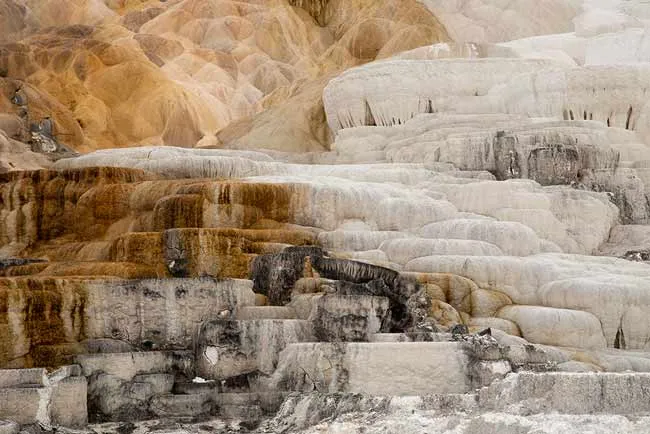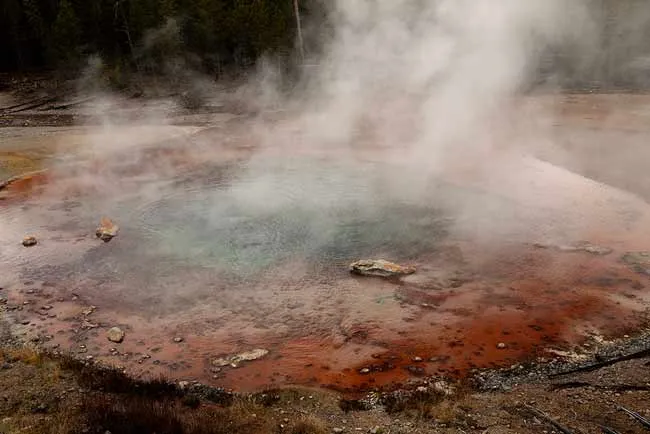Have you ever dreamed of a camping trip where you wake up to the gentle sound of a flowing stream and spend evenings stargazing by its banks? Streamside camping in Grand Teton is more than just a trip; it’s an immersion into the wild, a soul-healing experience, and a chance to connect with family. Grand Teton, with its majestic mountains and tranquil, clear streams, is the perfect destination for those seeking refuge from city noise and a return to nature.
Why Streamside Camping in Grand Teton is an Unforgettable Experience
Grand Teton National Park, nestled in Wyoming, USA, is a gem of wilderness. Renowned for its stunning granite peaks, it also captivates visitors with its abundant rivers, lakes, and streams. Streamside camping in Grand Teton offers unique benefits rarely found in other forms of travel:
1. Awaken Your Senses with Nature’s Symphony
The gentle murmur of a stream is not just a pleasant sound; it’s nature’s soothing symphony. Research shows that the sound of flowing water calms the mind, reduces stress, and improves sleep quality. Streamside camping allows you to be lulled to sleep by these peaceful sounds, waking up refreshed and energized.
2. Enjoy Privacy and Tranquility
Unlike crowded and noisy campgrounds, streamside camping often offers more privacy and peace. You can freely enjoy your own space, read a book, chat with loved ones, or simply admire nature without disturbance.
3. Easy Access to Natural Water Sources
One of the most practical benefits of streamside camping is the abundant natural water source. You can use stream water for washing hands, faces, or even cooking (after boiling or filtering thoroughly). However, always remember to bring enough drinking water reserves and water purification devices to ensure safety.
4. Opportunity to Explore Unique Streamside Ecosystems
Streamsides are habitats for diverse and unique flora and fauna. You can observe riparian birds, small fish darting in the water, or explore rich vegetation with moisture-loving plants. This is a fantastic opportunity to educate children about nature and raise environmental awareness.
5. Unique Outdoor Dining Experience by the Stream
Nothing beats enjoying a hot meal by the stream, surrounded by magnificent natural scenery. Prepare simple grilled dishes or cook a warm pot of stew to share with family and friends. The flavors of outdoor meals become even more special when combined with the fresh air and the sound of the stream.

Choosing the Ideal Streamside Camping Location in Grand Teton
Grand Teton National Park boasts numerous beautiful campgrounds, some nestled near enchanting streams. Here are a few suggestions for your consideration:
1. Gros Ventre Campground
Located along the Gros Ventre River, this campground offers stunning mountain views and spacious campsites. You can easily access the riverbank for fishing, swimming, or simply relaxing by the cool water. Gros Ventre Campground provides amenities like restrooms, drinking water, and picnic tables, suitable for families and groups.
2. Jenny Lake Campground
If you desire camping near one of Grand Teton’s most beautiful lakes, Jenny Lake Campground is a perfect choice. While not directly streamside, it’s just a short walk from Jenny Lake’s shore and close to small streams flowing from the mountains into the lake. You can easily hike to the lakeshore for sightseeing, kayaking, or other water activities. Jenny Lake Campground tends to be busy, especially during peak season, so reservations are recommended to secure a good spot.
3. Signal Mountain Campground
Perched atop Signal Mountain, this campground offers panoramic views of the Teton Range and Jackson Lake. Although streams don’t flow directly through it, Signal Mountain Campground is near streams and mountain lakes where you can explore and enjoy pristine wilderness. This campground is ideal for those who want to combine camping with hiking and exploring mountain trails.
4. Backcountry Camping
For adventurous souls seeking a wild camping experience, backcountry camping is an exciting option. Grand Teton National Park allows backcountry camping in designated areas, provided you obtain a permit and adhere to park regulations. Backcountry camping offers opportunities to find completely private streamside campsites and explore untouched wilderness. However, this type of camping requires experience and thorough preparation in terms of equipment, survival skills, and knowledge of safety in the wild.

Preparing for a Memorable Streamside Camping Trip
To ensure a successful and safe streamside camping trip, thorough preparation of equipment, skills, and knowledge is essential. Here are some important tips:
1. Camping Gear
- Tent: Choose a tent suitable for the number of people and weather conditions. A 4-season tent is a good choice if camping in fall or winter.
- Sleeping bag and sleeping pad: Ensure you have a warm enough sleeping bag and sleeping pad for comfortable sleep at night, especially in high-altitude areas.
- Stove and cooking utensils: If you plan to cook at the campsite, bring a camping stove, pots, pans, dishes, utensils, and necessary cooking tools.
- Flashlight or headlamp: Lights are indispensable for camping. A flashlight or headlamp will help you move around and operate easily at night.
- First-aid kit: Carry a basic first-aid kit to handle minor injuries or common health issues.
- Insect repellent: Streamside areas often have many insects, especially mosquitoes. Insect repellent will help you avoid bites and discomfort.
- Sunscreen and hat: Protecting your skin from the sun is crucial, especially when you’re outdoors all day.
- Appropriate clothing: Pack breathable, moisture-wicking clothes for daytime and warm layers for nighttime. A waterproof jacket is also essential in case of changing weather.
- Hiking boots: If you plan to hike or trek, bring specialized hiking boots to protect your feet and prevent slips and falls.
- Map and compass or GPS: If camping in remote areas or backcountry camping, a map and compass or GPS will help you navigate and avoid getting lost.
2. Essential Skills and Knowledge
- Tent pitching and packing skills: Practice setting up your tent at home before your trip to familiarize yourself with the process.
- Fire starting and outdoor cooking skills: Learn how to safely start a fire and cook simple meals using a camping stove or campfire.
- Map and compass or GPS skills: If you’re backcountry camping, learn how to use a map and compass or GPS to navigate and find your way.
- Knowledge of wilderness safety: Learn about potential wilderness hazards like wildlife, bad weather, and rugged terrain, and how to prevent them.
- “Leave No Trace” principles: Learn and adhere to “Leave No Trace” principles to protect the natural environment and preserve the beauty of Grand Teton for future generations.

Safety First: Streamside Camping Precautions
Streamside camping offers wonderful experiences but also carries certain risks. To ensure your safety and those around you, note the following:
1. Choose a Safe Campsite Location
- Avoid camping too close to the stream bank: Stream water levels can rise suddenly due to heavy rain or flash floods. Choose a campsite at least 30-50 meters away from the stream bank for safety.
- Do not camp under large trees or dead trees: Large or dead trees can fall due to strong winds or storms, posing a danger to tents and occupants.
- Choose a level and dry location: Avoid camping on steep terrain or in low-lying areas prone to flooding.
- Inspect the surrounding campsite area: Remove sharp objects, large rocks, or dead branches that could be hazardous.
2. Wildlife Safety
- Store food properly: Wildlife, especially bears, can be attracted to food odors. Store food in airtight containers or hang it from a tree at least 3 meters off the ground and 1 meter away from the trunk.
- Do not feed wildlife: Feeding wildlife can make them accustomed to human contact and become more dangerous.
- Maintain a safe distance from wildlife: Do not approach too closely or attempt to touch wildlife. Use binoculars or telephoto lenses to observe from a distance.
- Learn about dangerous wildlife in the area: Grand Teton is home to black bears, grizzly bears, mountain lions, and wolves. Learn how to identify and respond to these animals for safety.
- Carry bear spray: If camping in bear country, carry bear spray and know how to use it in case of an emergency.
3. Water Safety
- Do not swim in unsafe areas: Mountain streams are often very cold and fast-flowing. Only swim in designated areas with supervision.
- Supervise children carefully near streams: Children can slip, fall, or drown if not carefully supervised.
- Filter or boil stream water before drinking: Stream water may contain harmful bacteria or parasites. Always filter or boil stream water before drinking to ensure safety.
4. Wildfire Prevention
- Only build fires in designated areas: Check park regulations regarding fire building and only build fires in designated fire pits or rings.
- Do not build fires in high winds or dry conditions: High winds and dry conditions can cause fires to spread rapidly and ignite wildfires.
- Never leave a fire unattended: Always supervise a fire while it is burning.
- Extinguish fires completely before leaving: Ensure the fire is completely extinguished and ashes are cool to the touch before leaving the campsite.
Conclusion: Grand Teton Streamside Camping – An Unforgettable Experience
Streamside camping in Grand Teton is a unique travel experience, offering a chance to immerse yourself in wilderness, enjoy tranquility, and explore the majestic beauty of the mountains. With thorough preparation and a spirit of adventure, you’ll have a memorable and fulfilling streamside camping trip in Grand Teton National Park. Plan your adventure today and discover the wonders that nature offers!